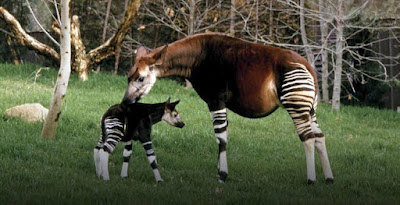Diet
Okapis are herbivores, benefiting from eating tree leaves and buds, grasses, plants, organic products, and growths. They are significant in the Ituri Woodland as they are the main known warm blooded animal that bolsters exclusively on understory vegetation, where they utilize their 18-inch tongues to specifically peruse for reasonable plants. The tongue is additionally used to groom their ears and eyes. They like to sustain in treefall holes. The okapi has been known to benefit from eating more than 100 types of plants, some of which are known to be noxious to people and different creatures. Fecal examination demonstrates that none of those 100 species commands the eating routine of the okapi. Staple sustenances involve bushes and lianas. The primary constituents of the eating routine are woody, dicotyledonous species; monocotyledonous plants are not eaten consistently. In the Ituri woodland, the okapi feeds mainly upon the plant families Acanthaceae, Ebenaceae, Euphorbiaceae, Flacourtiaceae, Loganiaceae, Rubiaceae, and Violaceae.
Reproduction
Female okapis become sexually mature at about one-and-a-half years old, while males reach maturity after two years. Rut in males and estrous in females does not depend on the season. In captivity, estrous cycles recur every 15 days. The male and the female begin courtship by circling, smelling and licking each other. The male shows his dominance by extending his neck, tossing his head, and protruding one leg forward. This is followed by mounting and copulation.
The gestational period is around 440 to 450 days long, following which usually a single calf is born, weighing 14–30 kg (31–66 lb). The udder of the pregnant female starts swelling two months before parturition, and vulval discharges may occur. Parturition takes 3–4 hours, and the female stands throughout this period, though she may rest during brief intervals. The mother consumes the afterbirth and extensively grooms the infant. Her milk is very rich in proteins and low in fat.
As in other ruminants, the infant can stand within 30 minutes of birth. Although generally similar to adults, newborn calves have false eyelashes, a long dorsal mane, and long white hairs in the stripes. These features gradually disappear and give way to the general appearance within a year. The juveniles are kept in hiding, and nursing takes place infrequently. Calves are known not to defecate for the first month or two of life, which is hypothesized to help avoid predator detection in their most vulnerable phase of life. The growth rate of calves is appreciably high in the first few months of birth, after which it gradually declines. Juveniles start taking solid food from three months, and weaning takes place at six months. Horn development in males takes one year after birth. The okapi's typical lifespan is 20 to 30 years.
Watch out for more articles that discuss more about this animal today.
Written By David Davidson



No comments:
Post a Comment